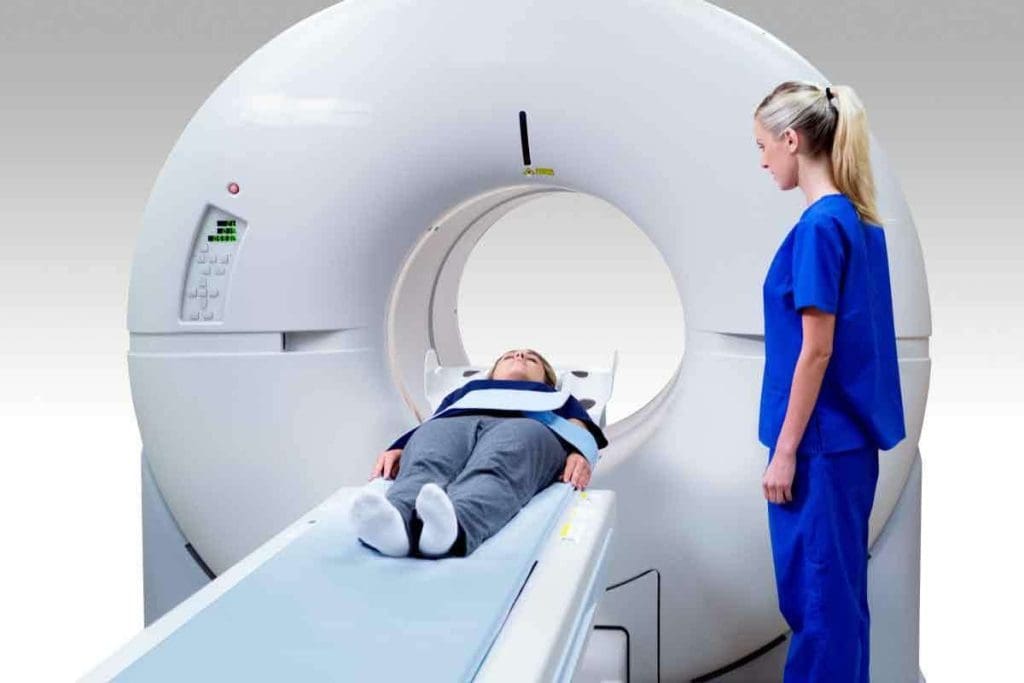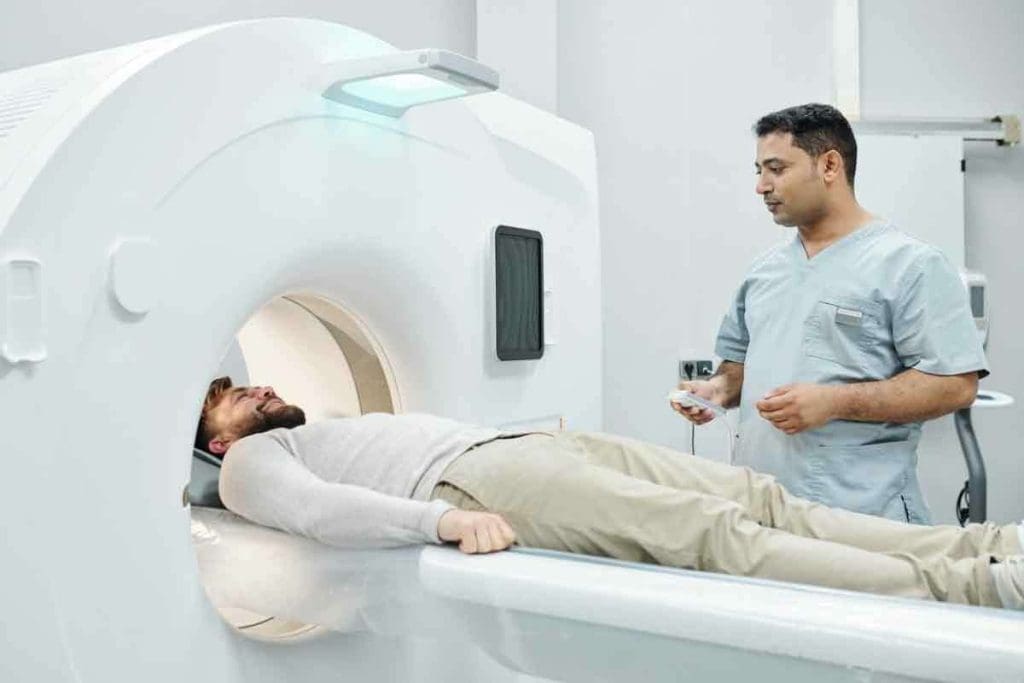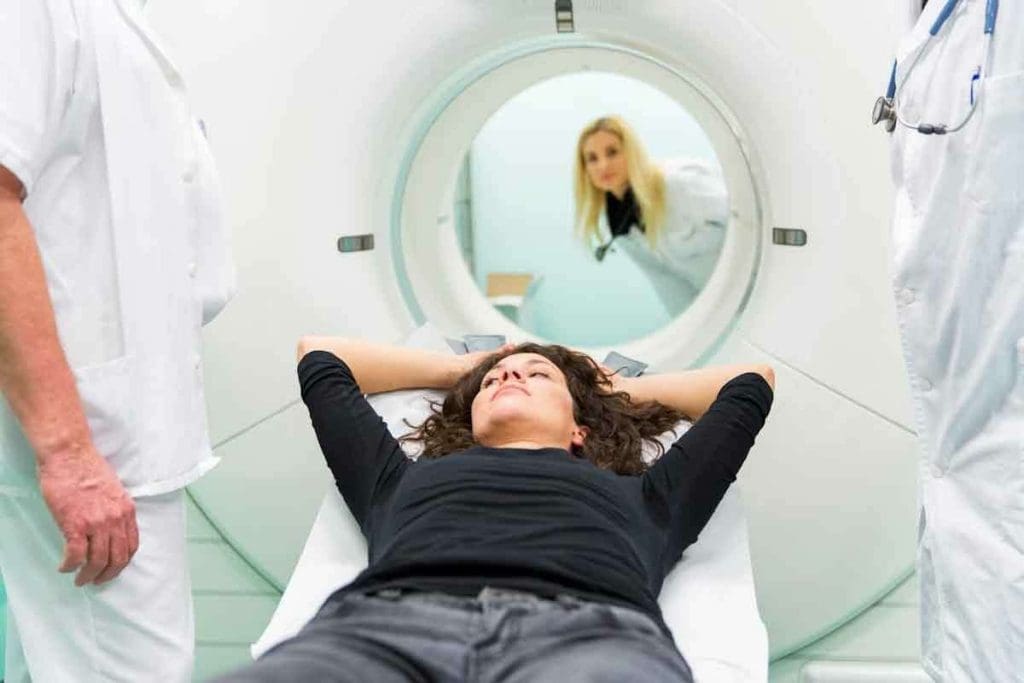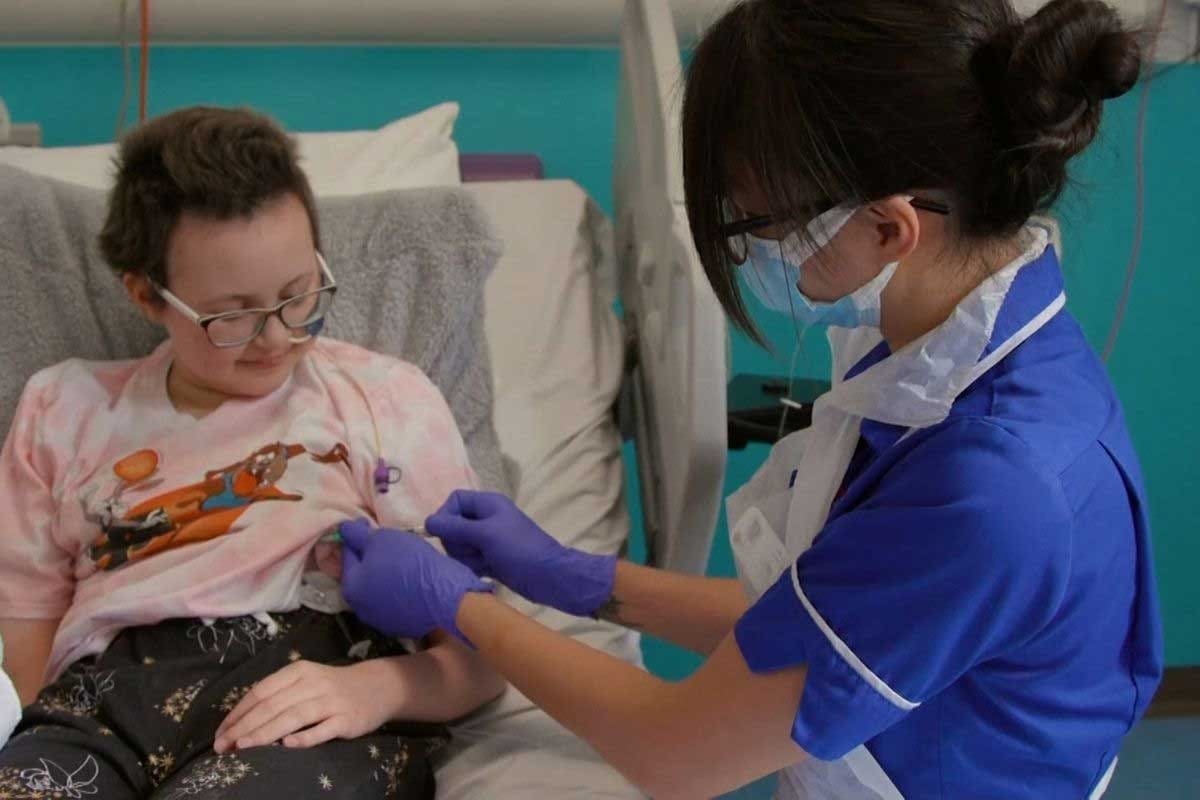Last Updated on November 27, 2025 by Bilal Hasdemir

At Liv Hospital, we know how important it is to make smart choices about your health. Positron emission tomography (PET) scans are a top-notch way to see how tissues work. They help doctors find cancer, heart, and brain problems more accurately.
PET scans are a big deal in treating cancer, heart issues, and brain problems. They use special tracers to check how the body’s cells work. This tech shows things that other scans can’t.
It’s key to know the good and bad sides of PET scans before you get one. We want to help you understand the ups and downs. This way, you can get the best care possible. Advantages and disadvantages of a pet scan: 7 pros and cons explained.
Key Takeaways
- Understanding PET scan technology and its applications.
- Recognizing the benefits of PET scans in diagnosing various conditions.
- Identifying the downsides and limits of PET scans.
- Seeing how PET scans help in treating cancer, heart, and brain issues.
- Using PET scan info to make smart health choices.
What Is a PET Scan?

Positron Emission Tomography, or PET scan, is a cutting-edge medical imaging method. It helps us see how the body’s cells work. This is key to finding and treating many diseases.
Definition and Basic Principles
A PET scan is a test that uses a special tracer to show how active the body’s cells are. It works by injecting a tiny bit of radioactive material. This material goes to areas where cells are very active.
This allows the PET scanner to make detailed pictures of what’s happening inside the body. These pictures help doctors understand how organs work and if there’s a disease present.
How PET Scans Differ from Other Imaging Methods
PET scans are different from structural imaging techniques like CT or MRI. While those show the body’s structure, PET scans show how active the body’s cells are. This is important for finding and treating diseases, like cancer and heart problems.
PET scans help doctors see where the disease is and how well the treatments are working. This helps them make better plans for treatment.
How PET Scans Work

Understanding PET scans is key to seeing their value in medicine. They use a special tracer that builds up in active body areas.
The Science Behind Positron Emission Tomography
PET scans rely on positron emission tomography. When a tracer is injected, it sends out positrons. These positrons meet electrons, creating gamma rays.
The PET scanner catches these gamma rays. It then makes detailed images of the body’s inside. This helps doctors see how cells work and spot problems.
The Role of Radioactive Tracers
Radioactive tracers are essential for PET scans. They are what the scanner detects. Different tracers are used for different needs, like oncology, cardiology, and neurology.
Fluorodeoxyglucose (FDG) is often used. It goes to areas that use a lot of glucose, like tumors. The right tracer is picked for each case, showing PET scans’ wide use in medicine.
Common Applications of PET Scans
PET scans are key in modern medicine, used in many areas. They help us diagnose and manage different conditions. This improves how well patients do.
Oncology Applications
In cancer care, PET scans are vital. They help us see how tumors work, find cancer again, and check if treatments are working. This info helps us tailor treatments for each patient.
The table below shows how PET scans help in cancer care:
| Application | Description |
| Cancer Diagnosis | Detecting cancerous tissues based on metabolic activity |
| Cancer Staging | Assessing the extent of cancer spread |
| Treatment Monitoring | Evaluating the response to treatment |
Cardiology Applications
In heart care, PET scans check how well the heart works. They help find problems with blood flow. This helps us choose the best treatment for heart issues.
Neurology Applications
PET scans also help with brain diseases like Alzheimer’s and Parkinson’s. They show how the brain functions and spot early signs of disease. This helps us track how the disease progresses.
These scans give us important information for treating brain disorders. They help us create effective treatment plans.
Key Advantages and Disadvantages of a PET Scan
PET scans are key in modern medicine, with both benefits and drawbacks. It’s important to look at both sides to see their value in healthcare.
Overview of Pros and Cons
PET scans are very accurate and can check the whole body. They can spot changes before they show up in other tests. But they also expose patients to radiation and are expensive.
They are great for finding and tracking diseases. Yet, the radiation is a big worry, mainly for those needing many scans. We’ll dive deeper into these points to fully understand the good and bad.
Factors to Consider Before Undergoing a PET Scan
Before a PET scan, think about the patient’s health, the disease, and radiation risks. Also, check the cost and insurance coverage. This helps doctors use PET scans wisely.
Choosing to have a PET scan should be well thought out. We need to consider each patient’s needs to get the most from PET scans while avoiding their downsides.
Advantage 1: Superior Diagnostic Accuracy
PET scans are unmatched in their ability to detect metabolic changes before structural damage occurs. This is key in diagnosing diseases early and treating them effectively. We’ll look into how PET scans achieve this high accuracy and their benefits for patients.
Detecting Metabolic Changes Before Structural Changes
PET scans can spot metabolic changes before they cause structural damage. This is a big plus in diagnosing diseases. Studies show that catching these changes early can be vital in managing diseases. They help doctors find conditions when they are easier to treat.
Implications for Early Disease Detection
PET scans’ ability to find metabolic changes early is huge for catching diseases early. Early detection means quicker treatment, which can lead to better outcomes. For example, in cancer, finding tumors early with PET scans can change treatment plans and boost survival chances. PET scans are essential in improving patient care and treatment success.
Advantage 2: Whole-Body Disease Assessment
PET scans offer a big advantage by assessing the whole body for diseases. This is very helpful in managing diseases like cancer. Knowing how far the disease has spread is key to planning treatment.
Comprehensive Disease Staging
PET scans give detailed images of the whole body. This helps doctors spot disease areas that other scans might miss. It gives a clear picture of how far the disease has spread.
This is very useful in cancer treatment. It lets doctors plan treatments that target all disease areas. This makes treatments more effective.
| Disease Stage | PET Scan Findings | Treatment Implications |
| Localized | Disease confined to a single area | Localized treatment (surgery, radiation) |
| Regional | The disease spread to the nearby lymph nodes | Combination therapy (chemotherapy, radiation) |
| Metastatic | Disease spreads to distant parts of the body | Systemic treatment (chemotherapy, targeted therapy) |
Benefits of Treatment Planning
PET scans help a lot in planning treatments. They show how far the disease has spread. This helps doctors plan treatments that fit each patient’s needs.
For instance, PET scans help decide if a patient needs local or systemic treatment. This personalized approach can lead to better results and a better life for patients.
Advantage 3: Swift and Noninvasive Procedure
PET scans are quick and don’t hurt, making them a top choice in medicine. They give accurate information without surgery, which is good for patients.
Patient Experience During a PET Scan
Patients lie on a table that slides into a scanner for a PET scan. It takes about 30 minutes to an hour. PET scans are noninvasive, so patients don’t have to go through surgery or feel pain. A doctor said,
“PET scans have changed how we find and treat diseases. They are a painless and quick way to diagnose.”
Comparison to More Invasive Diagnostic Methods
PET scans are way better than biopsies or surgeries. They are fast and don’t hurt, so there’s less chance of problems and quicker recovery. This is great for people who need to be checked often.
Advantage 4: Enhanced Treatment Monitoring
PET scans have changed how we care for patients. They give detailed views of how treatments work. This helps doctors make better choices for ongoing care.
Evaluating Response to Therapy
PET scans are key in checking if a patient is responding to treatment. This info is vital for knowing if the current treatment is working. For example, in cancer, PET scans show if a tumor is shrinking from treatment.
Studies show that PET scans help by letting doctors change treatments early. This can lead to better results.
| Therapy Type | PET Scan Benefits | Impact on Treatment |
| Chemotherapy | Assesses tumor response | Adjusts treatment intensity |
| Radiation Therapy | Evaluates tissue response | Modifies radiation dosage |
| Targeted Therapy | Monitors disease progression | Switches to alternative therapies |
Adjusting Treatment Plans Based on PET Results
PET scans help doctors change treatment plans when needed. This personalized care can greatly improve health. For instance, if a PET scan shows a tumor isn’t shrinking, doctors might change the treatment.
As mentioned in an article on local patients benefiting from PET scans, these changes can lead to better health.
Using PET scans, we can better monitor treatments. This leads to better care for patients.
Disadvantage 1: Radiation Exposure Risks
PET scans are very helpful but carry a risk of radiation exposure. This is something patients and doctors need to think about carefully.
Understanding Radiation Concerns
PET scans use radioactive tracers, which expose patients to radiation. Even though the doses are usually safe, there’s debate about long-term risks. Radiation risks could harm DNA, leading to cancer or genetic changes.
The amount of radiation from a PET scan depends on the tracer and the procedure. It’s important for patients to talk about their risks with their doctor.
New Technologies Reducing Radiation Exposure
New PET technologies aim to lower radiation risks without losing image quality. Researchers are working on better tracers and more sensitive scanners.
| Technology | Description | Impact on Radiation Exposure |
| High-Sensitivity PET Scanners | More sensitive detectors allow for lower doses of radioactive tracers. | Reduced radiation exposure |
| New Tracer Formulations | Tracers with shorter half-lives or lower emission energies. | Less radiation is absorbed by the body |
| Improved Reconstruction Algorithms | Enhanced image processing techniques. | Better image quality at lower doses |
Disadvantage 2: Cost and Accessibility Limitations
PET scans are valuable for diagnosis, but they come with a high cost and limited access. This can be a big problem for both patients and healthcare systems.
Financial Considerations and Insurance Coverage
PET scans are expensive, and insurance coverage varies a lot. It can be hard for patients to deal with insurance policies. Insurance providers may not always cover the full cost of PET scans, leaving patients with extra expenses. It’s important for patients to talk to their healthcare providers and insurance companies about the costs.
The cost of PET scans isn’t just for the scan itself. There are also costs for specialists to interpret the results and for any tests or treatments needed after the scan.
Geographic and Institutional Availability
PET scans are not available everywhere. Their availability depends on where you live and the healthcare facilities in your area. Rural areas often have limited access to PET scan facilities compared to cities. Even in cities, not all hospitals or diagnostic centers can do PET scans.
This lack of access can mean some people don’t get the care they need. It’s important to work on making PET scans more available in areas that need them most.
Disadvantage 3: Diagnostic Limitations and Interpretation Challenges
PET scans are a valuable tool for diagnosis, but they face challenges like false positives and negatives. It’s key to grasp these limitations when we rely on them for critical information.
False Positives and False Negatives
PET scans can sometimes show false positives and negatives. A false positive can cause unnecessary worry and more tests. On the other hand, a false negative might delay a diagnosis. For example, a study showed that PET scans for cancer can sometimes mistake inflammation or infection for cancer.
To tackle these problems, doctors often use PET scans along with other tests and assessments. This approach helps in making more accurate diagnoses.
Difficulties Distinguishing Between Benign and Malignant Disease
Another challenge is telling apart benign and malignant diseases with PET scans. Some benign conditions can show high activity, like cancer. At the same time, some cancers might not show much activity, making them hard to spot.
| Condition | PET Scan Characteristics | Diagnostic Challenge |
| Benign Tumors | High metabolic activity | Mimic malignant tumors |
| Malignant Tumors | Variable metabolic activity | May be missed if low activity |
| Inflammatory Conditions | Increased glucose uptake | Can be mistaken for tumors |
To overcome these hurdles, doctors must look at the patient’s overall situation. This includes symptoms, medical history, and other findings. Advanced imaging and follow-up scans can also help clarify things.
Understanding the limits and challenges of PET scans helps doctors use them better. This leads to better care for patients.
Conclusion
Positron Emission Tomography (PET) scans have changed how we diagnose diseases. They offer many benefits, like being accurate and noninvasive. But, they also have downsides, like the risk of radiation and high costs.
When using PET scans, doctors must think carefully about the pros and cons. This helps them decide when these scans are best for patients. As technology gets better, we might see fewer of the current problems.
In short, PET scans are key in today’s medicine. They help doctors understand diseases better and plan treatments. Knowing both the good and bad sides of PET scans helps us use them wisely for better patient care.
FAQ
What is a PETscana,n, and how does it work?
A PET (Positron Emission Tomography) scan is a way to see how the body works. It uses a special tracer to light up the body’s metabolic processes. This helps doctors understand what’s happening inside.
What are the advantages of PET scans over other imaging methods?
PET scans are better at finding problems early. They can spot changes in metabolism before they show up in other ways. This makes them great for checking the whole body and planning treatments.
What are the common applications of PET scans?
PET scans help in many areas of medicine. They’re used to check for tumors, see how the heart is working, and diagnose brain disorders.
Are PET scans safe, and what are the risks associated with radiation exposure?
PET scans do involve some radiation, but the risks are small. New tech is being made to use even less radiation, making them safer for patients.
How do PET scans compare to other diagnostic methods in terms of patient experience?
PET scans are easy and quick, making them comfortable for patients. They often avoid the need for more invasive tests.
Can PET scans be used to monitor treatment response, and how does this information help in adjusting treatment plans?
Yes, PET scans can track how well treatments are working. This info helps doctors adjust plans to give patients the best care.
What are the limitations of PET scans, and how do these impact their use in clinical practice?
PET scans have some downsides, like radiation risks and cost. They’re not perfect and can be hard to interpret. These things need to be thought about when deciding to use them.
How do false positives and false negatives occur in PET scans, and what are the implications?
False positives and negatives can happen for many reasons. This can lead to wrong diagnoses or delays. It’s important to carefully look at PET scan results.
Are PET scans covered by insurance, and what are the financial considerations?
Insurance for PET scans varies. It depends on the provider and the condition being treated. Patients should talk to their insurance to understand costs.
How are PET scans advancing in terms of technology, and what does this mean for future diagnostic capabilities?
New tech in PET scans is making them better. They’re getting more accurate, using less radiation, and making patients more comfortable. These changes will help PET scans do even more in the future.
Reference
- Wadsworth, M. E., et al. (2018). Radiation safety and dose management in PET imaging. Radiographics, 38(7), 2064“2074. https://pubmed.ncbi.nlm.nih.gov/30272279/






